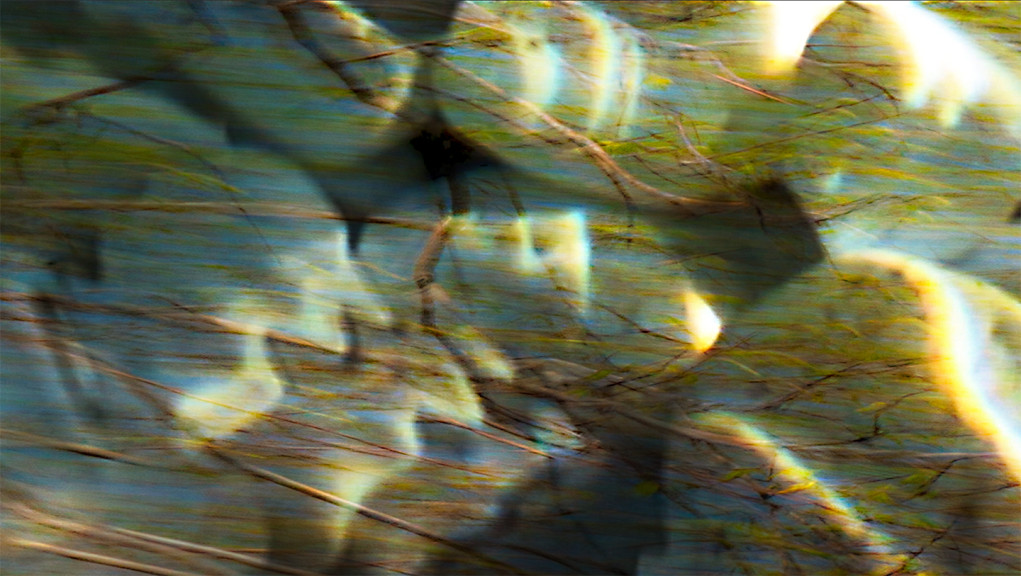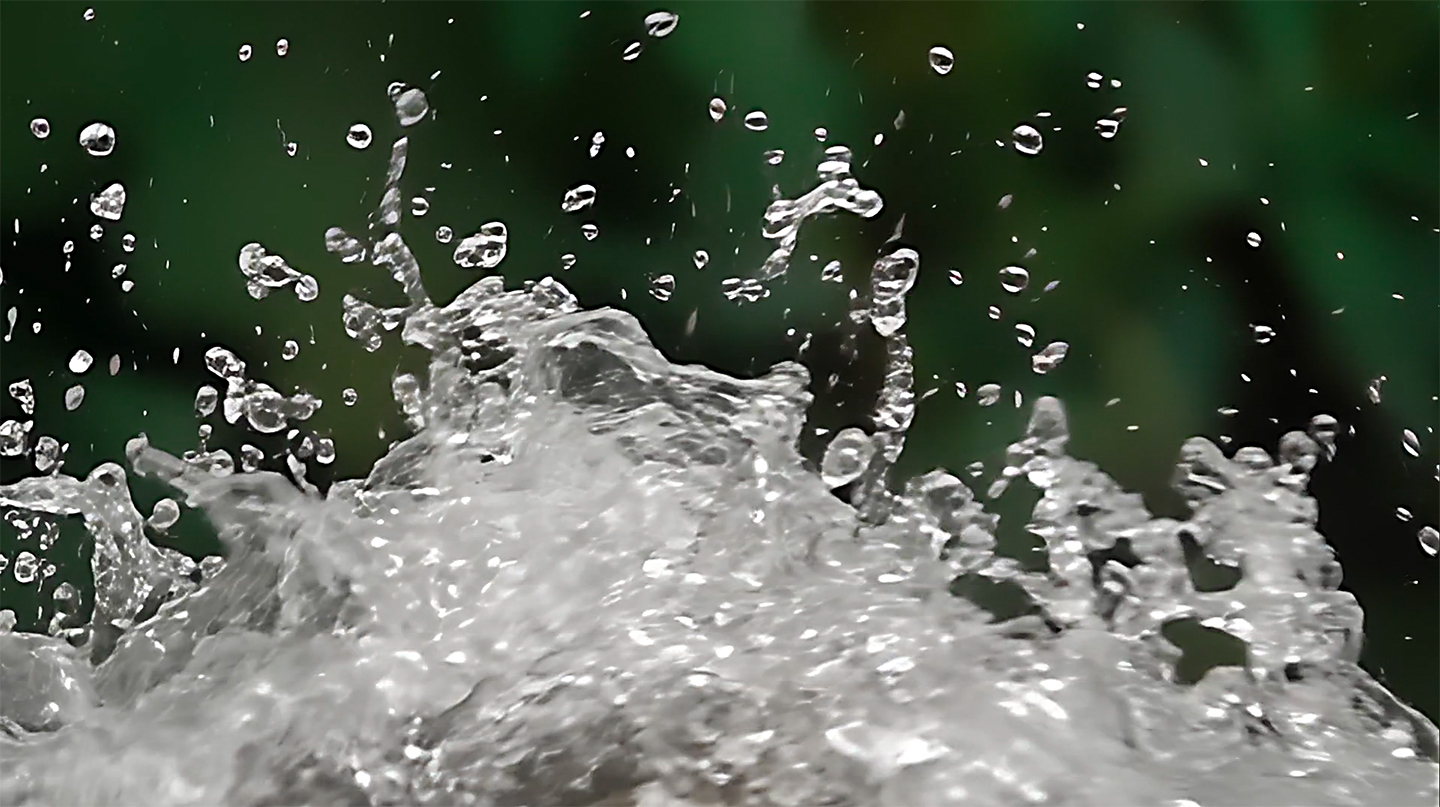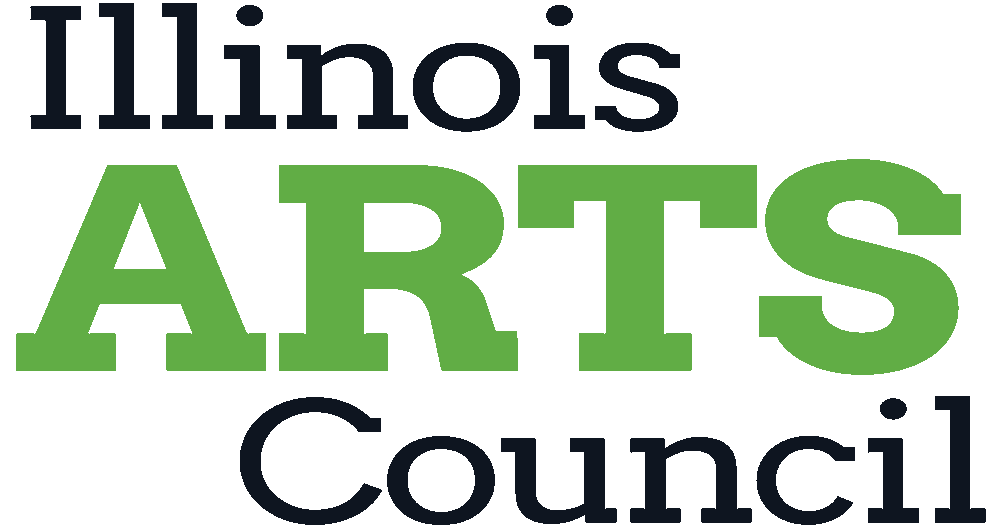Heartland Festival Orchestra Presents: Immersive Sound & Light

"Water and Dancing Landscapes" by Doug & Eileen Leunig
Founded in 2009, the Heartland Festival Orchestra (HFO) strives to challenge preconceptions about classical music through innovative programming, inviting audiences to participate in informal and interactive musical experiences. Based in Peoria and employing the region’s finest professional musicians, the orchestra’s performances vary not only in musical style and period but also in venue and ensemble size.
The HFO’s upcoming Immersive Sound & Light program on Saturday, April 5 is no exception. Conductor and artistic director David Commanday and artists Doug and Eileen Leunig have teamed up to create a one-of-a-kind interaction of sound, light, and space. Aaron Copland’s Appalachian Spring, Richard Wagner’s Siegfried Idyll, Antonio Vivaldi’s Spring, and Arvo Pärt’s Fratres will be synchronized with imagery and lighting that the Leunigs have designed and curated.
This is not the first time Commanday and the Leunigs have worked together. As neighbors on the same street in Peoria, they have known each other for a long time and collaborated professionally twice before. They teamed up for a fundraiser at the Peoria Riverfront Museum, where the Leunigs’ art was projected onto the planetarium dome as a quartet of musicians from the HFO played. Commanday also asked them to provide still imagery to pair with a piece on a concert in 2013.
The HFO always has a multimedia component to its concerts, projecting live video from several different camera angles onto a screen so the audience can gain a better appreciation of what the orchestra is doing. This time, the Leunigs will provide animated artwork that is synchronized with the entire musical program.
The aim of this approach is to better involve the audience in the experience and make them feel a part of the music-making. “Stravinsky himself said, what you see in a concert is as much a part of the concert itself,” Commanday explained. “Adding the visual element that’s in synchrony with the music helps to empower that feeling of involvement.” Commanday, who has an extensive background in opera and ballet, said he has always enjoyed the interaction between music and other forms of expression.
Recent HFO concerts have included an immersive performance of Beethoven’s Fifth Symphony with the audience seated among the orchestra and showings of silent films and video game excerpts accompanied by live orchestra. Commanday said this approach has expanded and diversified audiences, inviting in those who might otherwise feel intimated by the traditional “museum-like” symphony concert experience: “To me, every orchestra needs to overcome the sometimes explicit or unspoken assumptions that audiences who don’t know symphonic music have, which is, ‘I better sit still, and I better not applaud at the wrong moment, and I’ll embarrass myself because I don’t know anything.’”
Appropriately, spring is the overarching theme of the April 5 concert. While Vivaldi’s Spring from The Four Seasons and Copland’s Appalachian Spring are literal evocations of the theme, Wagner’s sweepingly pastoral Siegfried Idyll and Pärt’s shimmering Fratres will also reflect “the ambiance and spirit of the program,” Commanday explained.
More specifically, the Leunigs approached the theme of spring through the aspect of water—a subject to which they have devoted much of their artistic careers. The water imagery used in this program comes from as far afield as a fountain in Bulgaria to as local as the Leunigs’ own backyard. Water lends itself well to the their photographic technique, which involves shooting at 960 frames per second to achieve a high level of detail when played back in slow motion. “Water—when you see it in 960 frames a second slow motion—magically transforms from a substance that we all take for granted and are used to seeing all the time . . . into music,” Doug said.

"Bubble Dance"
The Leunigs have choreographed the movement of the water to match the peaks and valleys within the music. For instance, for the livelier sections in Wagner’s Siegfried Idyll, they intend to employ images of crashing waterfalls. The hope is that the audience will enter into a different state of mind and experience water in a way they have never done before. Coupled with the music, the water should conjure up unique images in the mind's eye and reveal fresh insights into the music as well.
This multimedia artistic collaboration is an extension of the Leunigs’ commitment to building community through the arts. As the founders of Big Picture Initiative, a nonprofit with the goal of “Changing the Face of Peoria” through public art, they have worked with other artists to create more than 30 murals in Peoria. Their mission is to build community by “using arts and creativity as a driver for social change, economic development, and wellness,” which they achieve through arts education and artistic initiatives such as the mural project.
Immersive Sound & Light will feed into this mission by creating a shared artistic experience. “We think that art in all forms is vital to a healthy community,” Eileen said. “This [concert] is a different aspect of public art. There’s something very community-building about people gathering together for a shared experience.”
This program, as with all HFO programs, will benefit a local nonprofit—and the choice could not be more apt given the program's ecological focus. Proceeds from Immersive Sound & Light will support the Sun Foundation, an organization that seeks to “strengthen and advance the arts and environmental sciences in our community by providing innovative, high-quality programs, services, publications, research, regranting financial support, and cooperative efforts for the general public, underserved groups, schools, artists, and arts organizations.”
Don’t miss the Heartland Festival Orchestra’s Immersive Sound & Light program on Saturday, April 5, at Five Points Washington.



